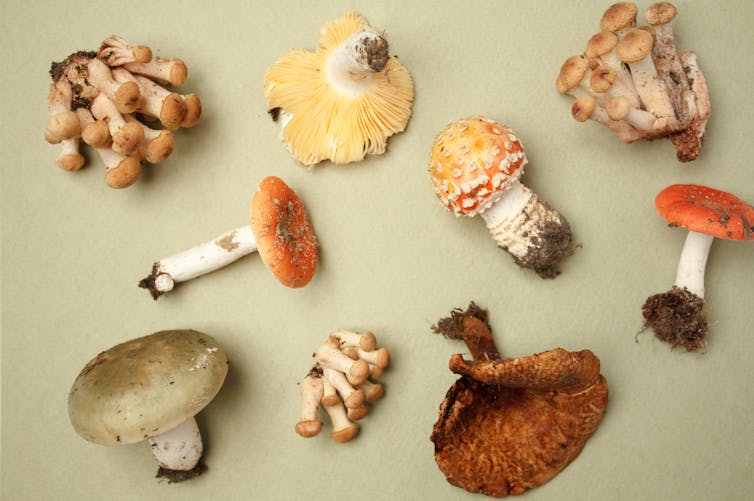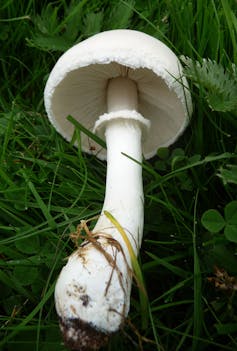The Legacy Continues
The legacy of Biology in a Box lives on after Susan Reichert’s retirement with new Director Elizabeth Derryberry and former Associate Director Kashina Hickson who are taking Biology in a Box in many new exciting directions.

Derryberry, Hickson, and EEB graduate students Ruth Simberloff and Amy Luo created bird activities. The bag includes an introduction to bird song, vocabulary words, a checklist for sighting local birds that includes photos and QR codes for their songs, and a separate card that kids can turn into a bird mask.

The Biology in a Box program is also developing new educational materials through a number of faculty grant broader impacts, including collaborations with EEB Assistant Professor Kimberly Sheldon and EEB Professor Nina Fefferman. Stay tuned for more new developments, including a new library lender program for boxes and a graduate student advisory board.
Read more about our Biology in a Box outreach program.
Photo credits: Leslie Chang-Jantz
 Kimberly Sheldon, an assistant professor in the Department of Ecology and Evolutionary Biology (EEB), was awarded a highly-competitive Faculty Early Career Development (CAREER) Award from the National Science Foundation (NSF). The award is NSF’s most prestigious recognition for early-career faculty members and recognizes individuals “who have the potential to serve as academic role models in research and education and to lead advances in the mission of their department or organization.”
Kimberly Sheldon, an assistant professor in the Department of Ecology and Evolutionary Biology (EEB), was awarded a highly-competitive Faculty Early Career Development (CAREER) Award from the National Science Foundation (NSF). The award is NSF’s most prestigious recognition for early-career faculty members and recognizes individuals “who have the potential to serve as academic role models in research and education and to lead advances in the mission of their department or organization.” Insects might compensate for temperature increases by shifting their behavior to use cooler microclimates within their environment. Sheldon’s research team will spend the next five years investigating how dung beetles in Tennessee and Ecuador respond to warmer and more variable temperatures and how that behavior impacts their offspring’s development and survival.
Insects might compensate for temperature increases by shifting their behavior to use cooler microclimates within their environment. Sheldon’s research team will spend the next five years investigating how dung beetles in Tennessee and Ecuador respond to warmer and more variable temperatures and how that behavior impacts their offspring’s development and survival. Jessica Budke, an assistant professor in the Department of Ecology and Evolutionary Biology (EEB) and director of the
Jessica Budke, an assistant professor in the Department of Ecology and Evolutionary Biology (EEB) and director of the  Using field-collected plants and natural history specimens, Budke will use an innovative and integrated research approach that incorporates comparative analysis of function morphology, physiology, and evolution to explore and understand the processes that have led to diverse adaptations for regulating parental-offspring resource allocation across species.
Using field-collected plants and natural history specimens, Budke will use an innovative and integrated research approach that incorporates comparative analysis of function morphology, physiology, and evolution to explore and understand the processes that have led to diverse adaptations for regulating parental-offspring resource allocation across species. Budke and her students will use the experiences and data from the course to build educational modules and activities for UT programs at natural history museums and local public botanical gardens. They will host sessions about mosses and specimen research for students grades 3-12 and will build an educational module for the UT Biology in a Box program to engage kids with natural history collections and moss biology.
Budke and her students will use the experiences and data from the course to build educational modules and activities for UT programs at natural history museums and local public botanical gardens. They will host sessions about mosses and specimen research for students grades 3-12 and will build an educational module for the UT Biology in a Box program to engage kids with natural history collections and moss biology.




 Tomatoes are the heart of many backyard gardens. Tomato crops are also an important economic revenue in North America. The vegetable we all know as the “T” of a great summer BLT, however, may be in jeopardy due to a decline in its pollinator species because of climate change.
Tomatoes are the heart of many backyard gardens. Tomato crops are also an important economic revenue in North America. The vegetable we all know as the “T” of a great summer BLT, however, may be in jeopardy due to a decline in its pollinator species because of climate change. This year, the college awarded an academic outreach research award to
This year, the college awarded an academic outreach research award to  This year, the college awarded an academic outreach service award to
This year, the college awarded an academic outreach service award to  This year, the college awarded an academic outreach teaching award to
This year, the college awarded an academic outreach teaching award to  Nina Fefferman
Nina Fefferman Brian O’Meara
Brian O’Meara Karen W. Hughes
Karen W. Hughes Often when we envision a professor who has been teaching for more than 40 years, we think of yellowed note pads or dull lectures.
Often when we envision a professor who has been teaching for more than 40 years, we think of yellowed note pads or dull lectures.  Jennifer Schweitzer
Jennifer Schweitzer For decades, scientists have worked to understand the intricacies of biological diversity – from genetic and species diversity to ecological diversity.
For decades, scientists have worked to understand the intricacies of biological diversity – from genetic and species diversity to ecological diversity. “This is our magnum opus,” said Elizabeth Derryberry, associate professor in the UT Department of Ecology and Evolutionary Biology (EEB) and a senior author of the study. “This research is the product of a decades-long international collaboration to produce a completely sampled evolutionary history of a massive tropical radiation – the 1,306 species of suboscine passerine birds.”
“This is our magnum opus,” said Elizabeth Derryberry, associate professor in the UT Department of Ecology and Evolutionary Biology (EEB) and a senior author of the study. “This research is the product of a decades-long international collaboration to produce a completely sampled evolutionary history of a massive tropical radiation – the 1,306 species of suboscine passerine birds.” “The tropics are a natural laboratory for speciation research,” said Michael Harvey, recent EEB postdoc and lead author of the study. “Many high-profile studies over the years sought answers to fundamental questions concerning species formation and maintenance, but even the best of these studies sampled only a minority of the existing species within the clade in question.”
“The tropics are a natural laboratory for speciation research,” said Michael Harvey, recent EEB postdoc and lead author of the study. “Many high-profile studies over the years sought answers to fundamental questions concerning species formation and maintenance, but even the best of these studies sampled only a minority of the existing species within the clade in question.” For this study, Derryberry, Harvey, EEB Professor Brian O’Meara, and fellow researchers used a time-calibrated phylogenomic tree to provide information needed for estimating the dynamics of suboscine diversification across time, lineages, and geography. They also used the tree to test links between the dynamics and potential drivers of tropical diversity.
For this study, Derryberry, Harvey, EEB Professor Brian O’Meara, and fellow researchers used a time-calibrated phylogenomic tree to provide information needed for estimating the dynamics of suboscine diversification across time, lineages, and geography. They also used the tree to test links between the dynamics and potential drivers of tropical diversity. “This paper marks not only a change in our understanding of evolution in the tropics, but also in acknowledgement and valuation of the diversity of culture, expertise, and perspective in the field of ornithology,” Derryberry said.
“This paper marks not only a change in our understanding of evolution in the tropics, but also in acknowledgement and valuation of the diversity of culture, expertise, and perspective in the field of ornithology,” Derryberry said. She has been one of the leading scientists in the field of animal behavior for decades, and a role model for generations of young researchers. Her work with K-12 schools in Tennessee has touched thousands of students over the last 20 years, instilling a passion for biology and for the scientific process. And, as she says, in the 1970s, she helped stopped a war from occurring between two Central American countries.
She has been one of the leading scientists in the field of animal behavior for decades, and a role model for generations of young researchers. Her work with K-12 schools in Tennessee has touched thousands of students over the last 20 years, instilling a passion for biology and for the scientific process. And, as she says, in the 1970s, she helped stopped a war from occurring between two Central American countries.